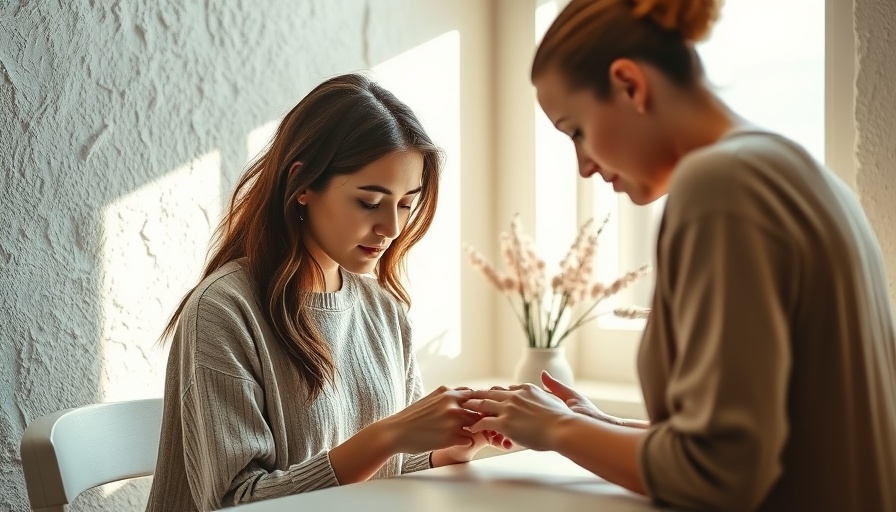
Are Nail Salons Safe? Unraveling the Risks of TPO
With the beauty industry booming, many individuals flip through magazines, scroll their feeds, and are enticed by the perfect manicure. However, beneath those attractive colors lies a troubling reality: the safety of cosmetic products many women, especially those over 55, frequently use is under scrutiny, particularly concerning a chemical compound called TPO—triphenyl phosphate. Under EU regulations, salons must stop using gel polishes containing TPO due to its potential fertility risks. This ban raises several questions not only about the safety of our beauty routines but also about the overall health impact of commonly used chemicals.
The Hidden Dangers of Beauty Products
While TPO has been acknowledged for its effectiveness in gel polishes, studies indicate that prolonged exposure could potentially disrupt hormonal balance and be linked to fertility issues. The ECHA or European Chemicals Agency announced the ban after substantial evidence emerged regarding the health implications of TPO. In the U.S., regulatory measures lag, leaving many consumers unaware of the risks associated with typical products found in salons. This delay prompts a deeper examination of the ingredients found in beauty products and their impact on our health, particularly for older adults.
What Are We Breathing In?
Consider this: each time you sit in a nail salon, you're often exposed to various volatile organic compounds emit from paints, adhesives, and polishes, which can compound health risks. According to a 2023 study from the Environmental Working Group, many nail products contain harmful ingredients linked to allergic reactions and skin irritations. The distinct smell in salons, a mix of varnish and chemicals, can signal potential health concerns, particularly for those with pre-existing respiratory issues or sensitivity to scents.
The Regulation Gap: What Can We Do?
Americans often remain unaware of how cosmetic ingredients are treated under U.S. health regulations compared to European standards. The EU's proactive ban on TPO contrasts sharply with the laissez-faire attitude towards beauty product regulations in the U.S. Experts suggest beginning a dialogue about health regulations at the community level, especially in places like Louisiana, where residents often take pride in self-care routines. Empowering consumers through awareness of these issues can lead to significant changes in product formulations.
Actionable Insights: Keeping Your Manicure Safe
For those wanting to maintain their beauty without compromising health, there are a few steps to consider:
- Research Products: Opt for salons that offer non-toxic nail products. Some brands highlight their commitment to safety on their labels.
- Ask Questions: Don't hesitate to inquire about the products being used. Knowledge is power, and asking salon professionals can shed light on what’s in those bottles.
- DIY Options: Explore at-home manicure kits that prioritize health and safety, utilizing natural ingredients free from harmful additives.
Personal Stories that Inspire Change
Consider the journey of Annette, a 58-year-old resident of Baton Rouge, who discovered her nail salon used products containing TPO and other harmful chemicals. After suffering from chronic headaches and skin irritations, she ultimately switched to a local organic salon. Annette's story serves as both a cautionary tale and an inspiration—encouraging others in Louisiana to become advocates for safer beauty practices by choosing establishments that prioritize health and transparency.
What's Next for Nail Salons?
As awareness spreads about the risks tied to chemicals in nail salons, we may witness a shift in consumer behavior. Many businesses are starting to respond to this demand, seeking to reformulate their products to eliminate hazardous chemicals and stand out by prioritizing customer health. What was once a trendy routine may become a more intentional choice echoing a broader cultural shift towards wellness and sustainability.
Nail safety is ultimately part of a larger discourse on consumer health. By advocating for safer products, shopping consciously, and supporting regulations that protect all consumers, individuals can play an active role in shaping a healthier beauty industry for themselves and future generations. The dialogue starts here—take action by researching your salon and learning more about what goes into everyday beauty products today.
 Add Row
Add Row  Add
Add 



Write A Comment